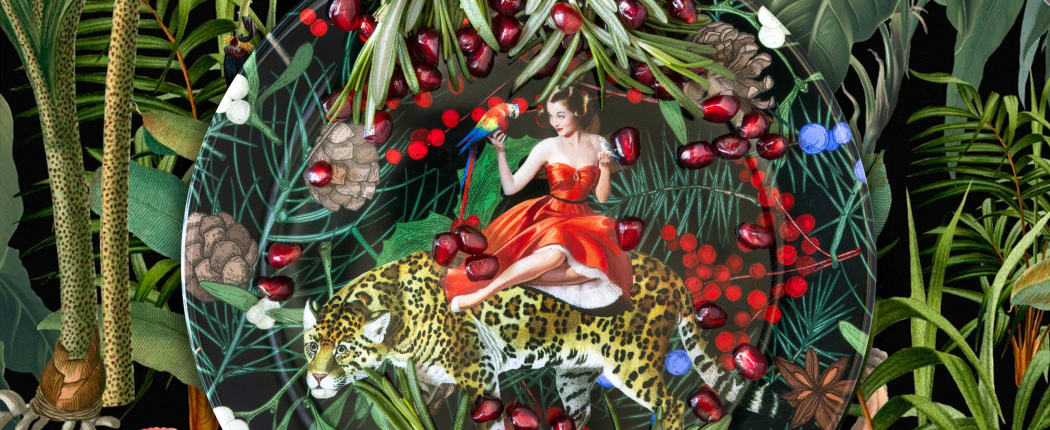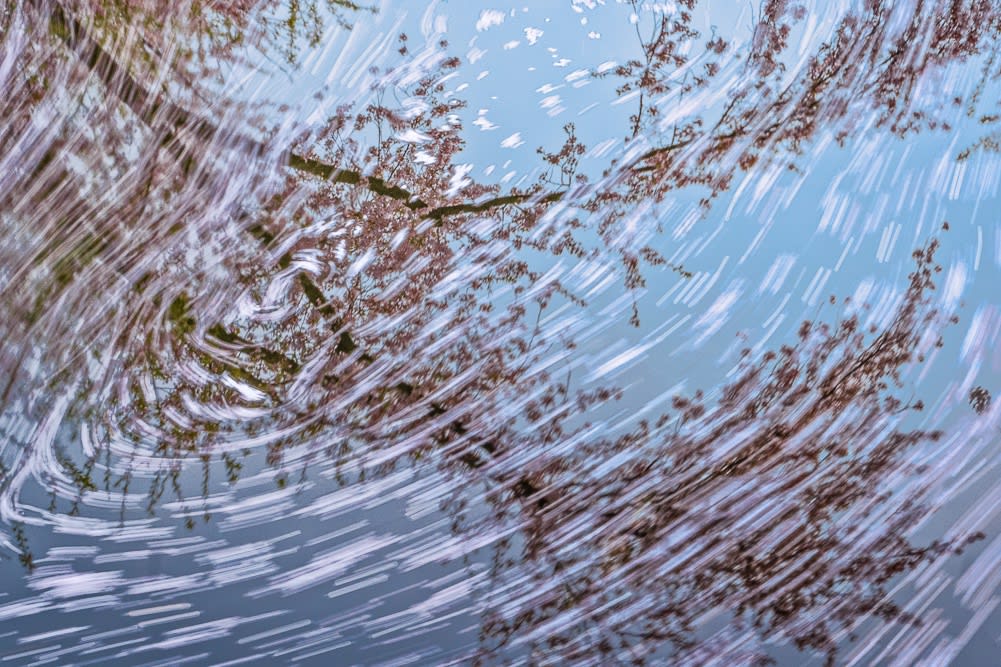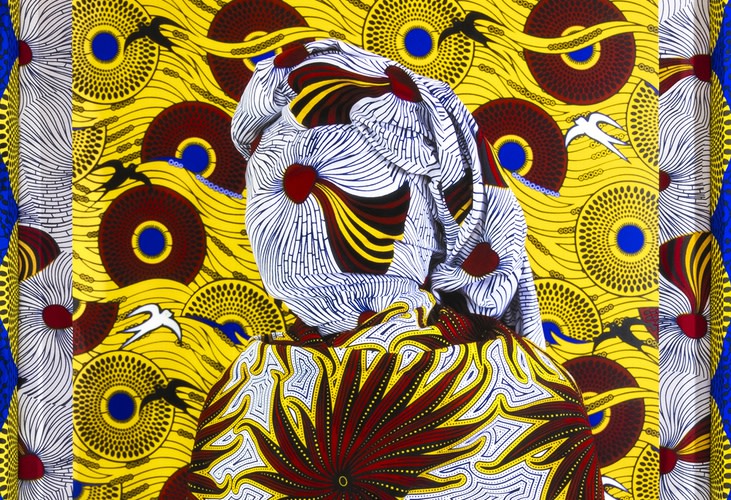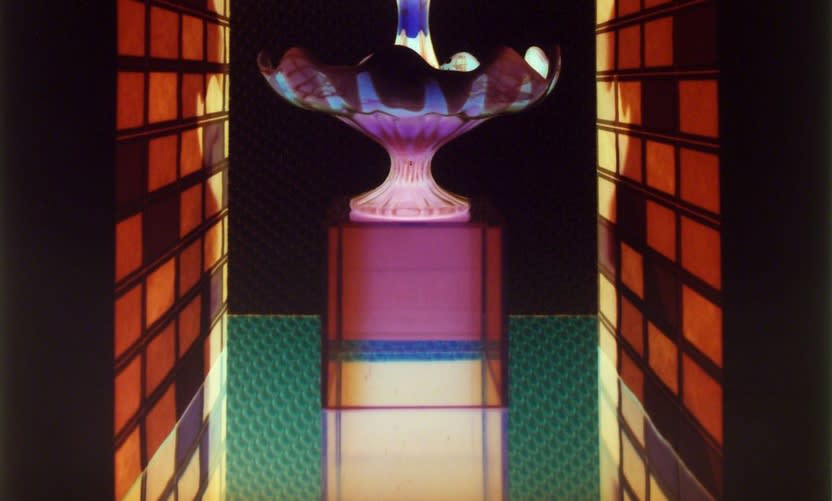-

JP Terlizzi's Creatures of Curiosity
By Geoffrey C. KoslovThe production of artwork flows from the release of something inside an artist that drives their creative expression. JP Terlizzi is an artist that uses his abilities to envision and build ephemeral works of art that are memorialized as photographs. In Creatures of Curiosity and Garden Symphonies, Terlizzi revisits his earlier works in The Good Dishes and Holding Arabesque, with several new twists. Terlizzi comments that, for him, “The Good Dishes integrates memory, legacy, and metaphor with my response to loss. Without fail, when it came to the family’s fine china, that item was always given to the person that most cherished its memory and sentimental value.” Following that series, the Covid crisis opened a door to additional creative expression: “Holding Arabesque was inspired by the shifts in my life brought on by a result of the pandemic. It was about craving stability in a time of instability. I built these food totems to push their stability as my response. Humor and Nostalgia are known coping mechanisms we resort to when we experience high stress or trauma… I was craving happier times.” As our culture began moving past social isolation, his visual engagement became bolder, first evolving into Garden Symphonies, and then Creatures of Curiosity.
-
 Xuan-Hui Ng, Remembrance #105
Xuan-Hui Ng, Remembrance #105Temporality and the Landscape Photograph
By Libby AtkinsThe emergence of photography as a medium revolutionized the temporality of landscape art. When we talk about photography, we also talk about time. When we talk about nature, we also talk about time. The cyclical nature of the world around us is not easily accepted by many Westerners. We have been taught to only conceptualize and value our human existence in terms of forwardness, linearity, and consumption. Inland / Outward follows the landscape photograph as relating to and reflecting the complexities of modern consciousness. As an acknowledgement of these complexities, Inland / Outward is appropriately a group show. Featuring seven artists, this collaboration of perspectives from Elizabeth Chiles, Robert Langham III, Libbie Masterson, Xuan-Hui Ng, David Reinfeld, Jane Szabo, and Margeaux Walter represents the subjectivity of relationships each of them have with the land. Through their images, we are called together to reevaluate our own relationships with the natural world.
-
 ©Alia Ali, Odyssey, MIGRATION Series, 2021
©Alia Ali, Odyssey, MIGRATION Series, 2021Cartographies of Pattern: The Work of Alia Ali
By Geoffrey C. KoslovAlia Ali uses a global palette of fabrics and photography to map culture and history. She is a US multimedia artist, photographer, and a global traveler with a Yemeni-Bosnian heritage, who is fascinated by the use and meaning of language and the patterns of hand woven indigenous fabric As Ali expresses it: “Textile unites and divides us, both physically and symbolically.” Her art reflects on the politics of borders, colonization, language and the non-verbal passage of traditions and cultural stories through fabrics created by master artisans from around the world. As a purposeful artist on a mission, Ali has made a concerted effort to meet the craftspeople who create these fabrics. She has traveled extensively to learn about meaning and processes associated with the fabric, patterns and pigments. While the fabrics are regional, the appreciation and production has become global. On the surface, these may plainly look like an exciting colorful presentation, but what is covered and explored in the exhibition “Cartographies of Pattern” is a deeper journey, guided by Alia Ali’s imagery, into the story behind each threaded weave of her BORDERLAND, FLUX, MIGRATION, FLOW, INDIGO and حب (ḥub) // LOVE series.
-
 ©Karen Navarro, Untitled (perspective), 2021
©Karen Navarro, Untitled (perspective), 2021The Constructed Self Commentary
By Geoffrey C. KoslovKaren Navarro, an immigrant from Argentina, with a heritage rooted in an indigenous people, now living in the United States, uses a photography-based multidisciplinary approach to self discovery, womanhood and the impact of social media on ourselves and others. All these concepts are woven together in her use of photography, collage and sculpture. Her work is, at the same time, non-traditional portraiture of others and self-portraiture. Her newest work, “The Constructed Self”, is a continuation of an examination of “self” that threads through all of her previous efforts.
-
 © JP Terlizzi, Empress Royal Hague Blue Floral with Orange (2019)
© JP Terlizzi, Empress Royal Hague Blue Floral with Orange (2019)The Good Dishes: The Art of JP Terlizzi
By Geoffrey C. Koslov“The Good Dishes” by JP Terlizzi is photography-based artwork with a foundation in family tradition, history and culture. He broadens a classic still-life genre into a series of images that celebrate life and memory. “The Good Dishes integrates memory, legacy, and metaphor with my response to loss. As I witness an early generation of family members pass, my cousins and I were each tasked with the emotional challenge of cleaning out the family home. Sorting through the heirlooms, we would determine which items to toss, sell, or preserve. Without fail, when it came to the family’s fine china, that item was always given to the person that most cherished its memory and sentimental value.”
-
 © Robert Calafiore, Untitled (2016)
© Robert Calafiore, Untitled (2016)Images Without a Lens: The Art of Robert Calafiore
By Geoffrey C. KoslovBefore there were cameras with a glass lens, whether on a phone or any one of the many styles of “camera” available today, images were seen on walls and floors as light traveled through tiny holes in barriers between an interior space and the outside world. Before people understood how images could be captured, light entering a darkened space intrigued, amazed and even frightened early humans. Robert Calafiore has practiced the art of using a pin-sized hole on a dark, light-tight box, to capture an image on light sensitive paper. He has brought forward the most ancient of image creation traditions and reintroduced it into our digital dominated modern age.